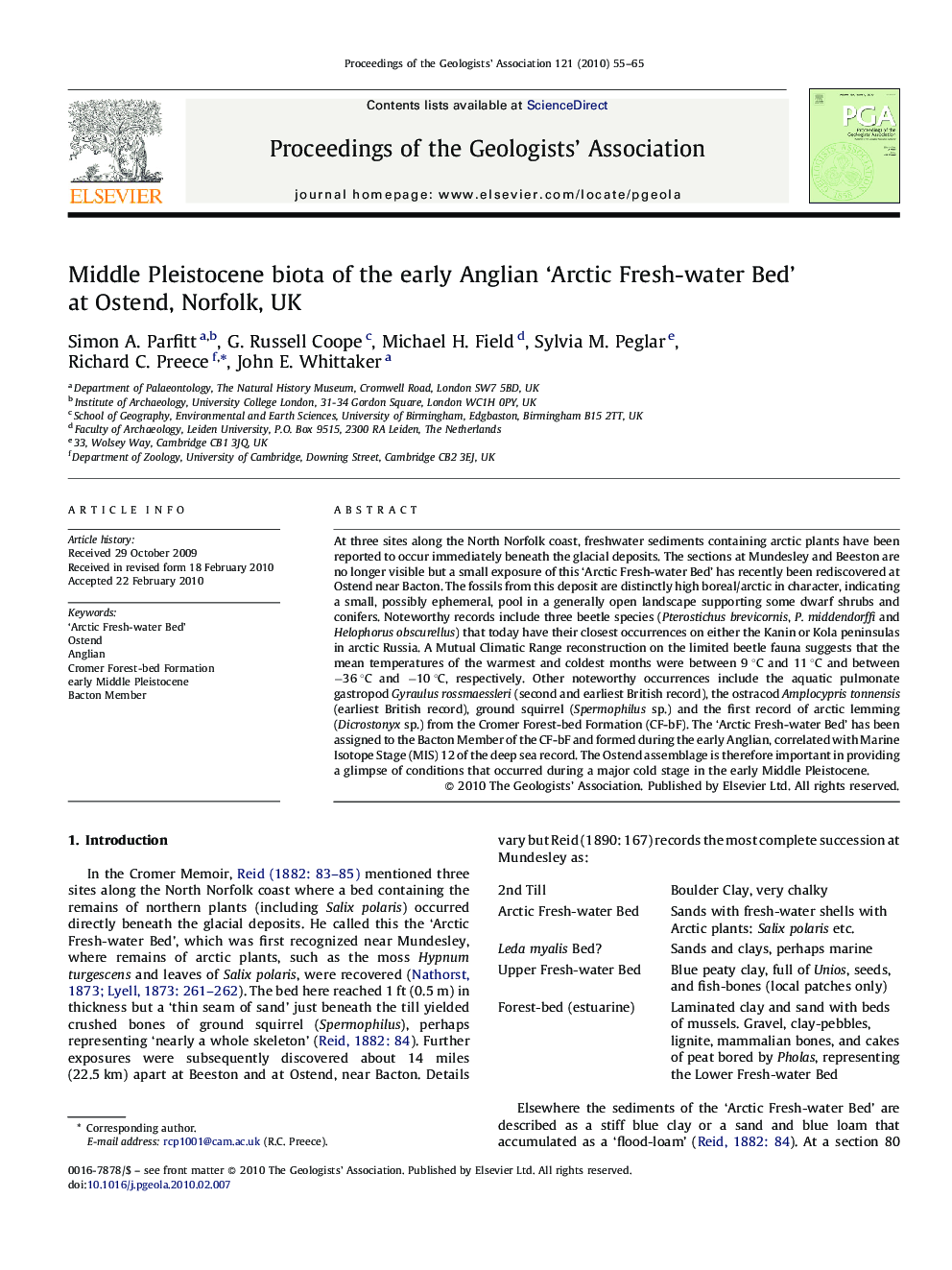| Article ID | Journal | Published Year | Pages | File Type |
|---|---|---|---|---|
| 4735111 | Proceedings of the Geologists' Association | 2010 | 11 Pages |
At three sites along the North Norfolk coast, freshwater sediments containing arctic plants have been reported to occur immediately beneath the glacial deposits. The sections at Mundesley and Beeston are no longer visible but a small exposure of this ‘Arctic Fresh-water Bed’ has recently been rediscovered at Ostend near Bacton. The fossils from this deposit are distinctly high boreal/arctic in character, indicating a small, possibly ephemeral, pool in a generally open landscape supporting some dwarf shrubs and conifers. Noteworthy records include three beetle species (Pterostichus brevicornis, P. middendorffi and Helophorus obscurellus) that today have their closest occurrences on either the Kanin or Kola peninsulas in arctic Russia. A Mutual Climatic Range reconstruction on the limited beetle fauna suggests that the mean temperatures of the warmest and coldest months were between 9 °C and 11 °C and between −36 °C and −10 °C, respectively. Other noteworthy occurrences include the aquatic pulmonate gastropod Gyraulus rossmaessleri (second and earliest British record), the ostracod Amplocypris tonnensis (earliest British record), ground squirrel (Spermophilus sp.) and the first record of arctic lemming (Dicrostonyx sp.) from the Cromer Forest-bed Formation (CF-bF). The ‘Arctic Fresh-water Bed’ has been assigned to the Bacton Member of the CF-bF and formed during the early Anglian, correlated with Marine Isotope Stage (MIS) 12 of the deep sea record. The Ostend assemblage is therefore important in providing a glimpse of conditions that occurred during a major cold stage in the early Middle Pleistocene.
